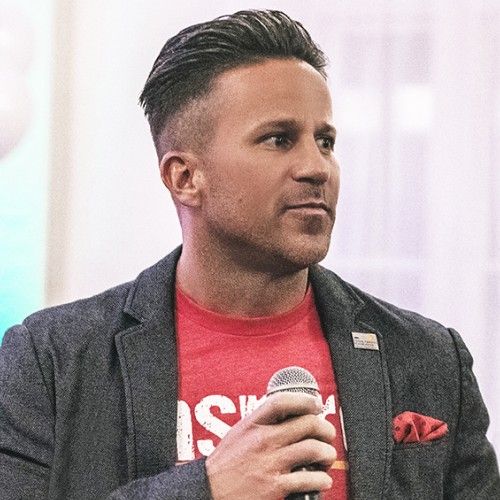In part 1 of this 2-part article, I wrote about the psychology of why decision-makers make decisions to hire or not hire certain professionals for work. In a nutshell, people will do more to avoid pain than to gain pleasure. One implication of this is that decision-makers aren’t necessarily going to choose the cheapest option if they already have a pre-approved budget, nor will they choose the option that promises the highest upside.
The decision-maker will choose the option that represents the lowest risk of them getting fired.
Therefore, if we are in business development, whether that be we are looking to sell our products or services on a B2B level or get hired by a company for employment, we need to position ourselves in a way that demonstrates that we are the low risk option for the company to choose.
How can we do this?
First, identify the risks. There are 3 core risks that decision-makers weigh when making decisions:
- Financial
- Time
- Reputation
Financial risk represents the risk that the money spent with a consultant or contract will be a bust. The more a person charges, the more risk the buyer must weigh when making a purchase decision. But as outlined in part 1 of this article, if a buyer has a pre-approved budget, there is little practical financial risk if the proposal comes in under budget.
This leaves time and reputation as the two biggest factors business development professionals must overcome to build trust and close the deal.
Time risk represents the total amount of time it will take to implement a solution and the time it will take others at the company to deviate their normal behavior to this new behavior a consultant is prescribing. If a consultant is selling change management consulting, the time is the amount of time it will take to achieve the desired result. If a person is looking to get hired for employment, this is the amount of training time required to develop a self-sufficient and productive team member. For most decision-makers, this unknown intermediary period is the risk they are worried about.
The pivot point centers around the credibility of the person proposing this change. They need to demonstrate to the decision maker that their plan is achievable within the proposed timeline. If someone promises too short of a timeline without much proof or track record of achieving that, then it represents high risk. If someone shares a timeline that is too long, much longer than the buyer has patience for, then it represents high risk as well because there is no chance of meeting expectations. The only success condition would be over performing expectations, and that’s a prayer, not a plan. The person doing business development needs to find the middle ground.
Reputational risk is the amount of people being impacted by this decision-maker’s decision. If a decision maker hires a consultant that only impacts the work of a few people then the reputational risk is relatively low. But if the decision-maker is making a decision that will impact everyone at the company, there is high reputational risk. If they hire the wrong person, or if the person hired does a bad job, it reflects poorly on them, increasing their chances of getting fired or losing credibility for making a poor choice.
When people share the adage, “nobody ever got fired for buying IBM”, it truly holds a lot of weight. Even if it costs more, decision-maker’s are seeking the lowest risk option for whom to do business with.
Therefore, if we are a small to medium-sized consulting company looking to get business (or a candidate for hire that doesn’t have a ton of experience), we need to do things to de-risk the decision for the decision-maker.
Unfortunately, there isn’t a credit rating check for one’s credibility. Sure, people have references, but nobody is ever going to list a bad reference for themselves.
Therefore, if we are looking to develop business, we need to be creative about de-risking the financial, time, and reputational risk when it comes to deciding who to hire.
Proximity + Follow Through = Trust
- Proximity
The more someone spends time with another person, the more comfortable they feel with that person. If a business development professional can spend more time with a prospect, they build rapport and connection to that person.
2. Follow Through
2. Follow Through
Do what you say and say what you do. If a business development professional says they are going to do something or deliver value in some way, they better do it.
How can consultants achieve this with their prospects?
One thing my team at Ambition In Motion has done for consultants is help them set up their own executive mastermind groups. An executive mastermind group is a group of leaders coming together to work through a challenge. The consultant facilitating the group isn’t there to solve their challenges, but rather create a safe space for leaders to discuss their challenges and work through the challenges together. This builds trust through proximity, and it’s also a low-risk decision for the decision-makers.
This has been incredibly helpful for consultants because it oftentimes creates an opportunity for them to engage with a prospect before they are ready to commit to a bigger contract for more services. And it keeps the consultants from seeming like door-to-door salesmen when an opportunity for partnership arises.
For example, a consultant might propose their services at $20,000 per month over a 6-month period and incorporate 50% of the company to achieve a certain result.
Financial risk = $120,000
Time risk = 6 months and a certain number of hours from each employee participating deviating from what they normally do
Reputational risk = 50% of the company
Without trust, it will be incredibly hard for a consultant to land this deal.
The prospect might say “I am interested but follow up with me in 3 months.”
Will this lead to a deal? Maybe. But a lot of things can happen between now and 3 months.
- The prospect could meet another consultant that they build greater rapport with and sign a contract with them.
- The needs of the company can alter, and the decision-maker assumes that the consultant can’t be flexible to the changes so they don’t let the consultant know.
- The prospect could just decide that they want to try doing this internally.
Instead, the consultant can offer the prospect the ability to be in their executive mastermind group and offer a helpful service now while building long-term trust.
Financially, the group is much more cost-effective than their consulting services.
Time-wise, the group represents a much smaller time investment compared to the consulting services.
Reputationally, the group only involves them, the decision-maker and nobody else at their company.
Participating in an executive mastermind group represents a low-risk option for the decision maker to be around the consultant more and assess the consultant’s ability to follow through. Furthermore, the group gives both parties a chance to learn more about each other. It won’t always be a perfect fit, and this also helps the consultant avoid over-committing as they learn more about prospective companies and their needs.
And, over time, if the prospect feels trust with the consultant, it will be a very low risk proposition for them to hire the consultant for expanded services. The key to this method’s success is the mutually assured benefits for both parties throughout the process.
If you are a consultant, executive coach, or anyone in B2B sales and would like to learn about setting up an executive mastermind group for yourself, reach out to me on LinkedIn and I’d love to tell you about it.




































































